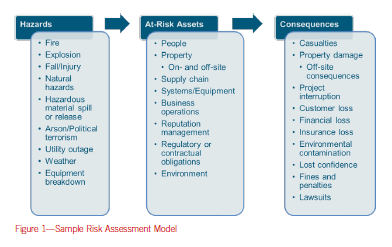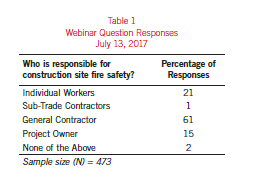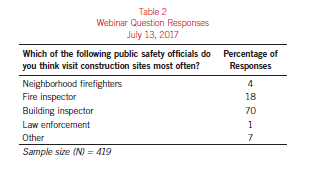
October 2017 BSJ Disaster Mitigation: Codes Perform in the Midst of Calamity
Tackling Fires in Buildings Under Construction
When the seven-story Metropolitan Apartments in Raleigh, N.C., burned June 2, it was just one of several in a long string of huge building project fires that have plagued the U.S. construction industry.
Since June, additional fires have damaged or destroyed: a seven-story, 83-unit apartment in Boston; a seven-story mixed-use building in Oakland, Calif.; and five five-story buildings in Waltham, Mass. In 2017 alone, major construction fires ruined projects in Philadelphia; Lynwood, Wash.; Maplewood, N.J.; Overland Park, Kansas; College Park, Md.; and East Hollywood, Calif. Each time, losses ran into the millions of dollars, and projects were delayed by a year or more.
What is causing these fires? In some cases, the damage has been so severe no formal cause could be identified. In others, human carelessness from hot work or smoking resulted in severe damage. And in at least two of these events, the fires were determined to be intentionally set. Regardless of their cause, these events put firefighters at risk; stretch fire, building and water departments to their limits; disrupt traffic; and compel people to ask if combustible construction is safe.
When completed, these projects most often meet the requirements of the International Building Code (IBC). But fires during construction occur when the structure is most vulnerable: fire protection systems and equipment may not be in place, fire-resistive construction and opening protectives may not be complete, and a huge variety of flammable and combustible material may have accumulated on a job site.
Action Plans
To address the problem and bring public safety into focus, several global and national organizations created the Coalition for Construction Fire Safety. Founded by the American Wood Council, current members include the International Code Council (ICC), the National Association of Home Builders (NAHB) and the National Fire Sprinkler Association (NFSA). Other groups representing construction and building materials interests are expected to sign on soon. Membership is free and open to any individual or organization interested in addressing this challenge.1
The Coalition collects information on these major events, analyzes their causes and consequences, and is developing strategies to reduce the number and severity of fires. To address the immediate needs, the Coalition on July 13 delivered a webinar for more than 600 design professionals and code officials highlighting recent significant fires and explaining how fire codes and standards are intended to prevent them. The webinar and an accompanying print version can be obtained at the AWC Education site by selecting “BCD 235—“Fire Protection During Construction.”
Question: Who is in charge?
Some professionals share the opinion that the solutions to these unwanted fires can be found in the existing IBC, International Fire Code (IFC) and the NFPA (National Fire Protection Association) 241 “Standard for Safeguarding Construction, Alteration, and Demolition Operations.” All of these documents provide detailed guidance on ways to prevent fires from starting and minimizing the consequences if they do. But there is a gap due to inadequate awareness, training and enforcement.
IBC Chapter 33, “Safeguards During Construction,” gives the building code official authority to require portable fire extinguishers, standpipes, sprinklers and a fire protection water supply for buildings under construction. The fire protection water supply—temporary or permanent—is required as soon as combustible materials arrive on the site. IFC Chapter 33 includes the IBC requirements and expands on them with safety controls for combustible storage, hazardous materials, hot work, explosives and temporary heating equipment. One of the interesting results from the July 13 webinar emerged when attendees were asked, “Who is responsible for construction site fire safety?” The results do not comport with the IFC requirements, suggesting more awareness is needed. Table 1 shows the results from the instant poll. While the general contractor usually oversees the project day-to-day, both the IFC and NFPA 241 put the responsibility clearly on the project owner, who is expected to serve as or appoint a “fire prevention program superintendent.” Of course, the owner may designate the general contractor to serve in that role, but then the contractor has specific duties that must be accomplished. The fire prevention program superintendent is responsible for:
- Pre-incident planning with the local fire service. At the very least, the plan should identify site access points, fire protection water supplies, methods to notify the fire department and ways to warn and account for all workers and visitors on the construction site. As projects grow in size and complexity, fire safety plans should be evaluated to address all the potential hazards. Figure 1 offers a risk assessment model that can help the superintendent focus the plan’s development.
- Training personnel in fire protection equipment use. The construction site should have a suitable number and type of portable fire extinguishers to control or suppress a fire. The extinguishers should be distributed throughout the site, and workers must be trained in how to use them.
- Supervising the hot work permit program. Welding, cutting, grinding, roofing operations, tar kettles, torches, brazing and soldering are among the numerous heat sources that create potential dangers on the work site. Chapter 35 of the IFC provides detailed guidance on hot work permitting and safety practices. Additionally, most property insurance carriers, FM Global and NFPA have model hot work programs that can be employed.
- Verifying fire protection devices and equipment maintained and serviced. Fire hydrants, temporary and permanent standpipes and sprinkler systems, fire detection systems and portable fire extinguishers need to be checked regularly to assure they are in place, unobstructed and operational.
Although not spelled out in Chapter 33, a corollary responsibility is monitoring fire protection system impairments. When fire protection systems are impaired—by accident or intent—an impairment coordinator and plan must be employed. IFC 907.1.1 (2015 Edition) outlines the duties, responsibilities and record-keeping requirements for the impairment coordinator.
Question: Who is paying attention?
A second, equally provocative question asked during the webinar was, “Which of the following public safety officials do you think visit construction sites most often?” Table 2 provides the results:
While not a scientific survey, the results suggest there is an impression fire service representatives make construction site visits less than half the frequency of the building inspectors. Further analysis of the attendees revealed only 13 contractors participated in the webinar, so these responses reflect the opinion of professionals not routinely on the job site.
These responses inspire two suggestions: 1) Train building code officials to increase their awareness of construction site fire dangers, and 2) Encourage the fire services to make more frequent—and perhaps visible—visits to size-up potential problems and mitigate hazards.
Additional Resources
Clearly, safety codes alone cannot eliminate significant construction site fires. The solution may lie in increasing consumer awareness and education, as well as rigorous code enforcement. A thorough follow-up survey is needed to learn how code officials are using the tools available to them in the International Codes (I-Codes) and NFPA.
Meanwhile, the Coalition for Construction Fire Safety is working to address the problems and find workable solutions. Free construction safety resources are available at Construction Fire Safety Practices, where you can find step-by-step safety guides, fire safety manuals, site specific fire safety plan templates and other education materials. U.S. Department of Labor’s Occupational Health & Safety Administration (OSHA) offers model safety and fire prevention plans. Finally, an internet search on construction fire safety template returns a variety of model plans that can be downloaded and adapted at no cost.
Summary
Fires in buildings under construction threaten adjacent properties, endanger lives, create temporary unemployment and delay development of critically needed housing. The I-Codes and the Coalition for Construction Fire Safety offer the tools to address and mitigate the problem.
Will you use them?









